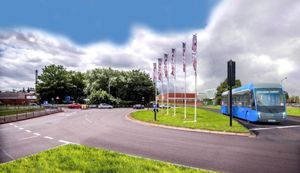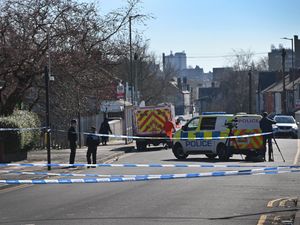Walsall park and ride proposal clears hurdle
Plans to create a park and ride facility in Walsall as part of the controversial Sprint bus development have cleared a hurdle.

Walsall Council planners have decided an environmental impact assessment (EIA) is not needed for the facility that is set to be built on land next to the Bell Inn on the A34 Birmingham Road.
The park and ride will see 300 spaces for cars created, along with provision for motorbikes, cycles, disabled users and electric vehicles.
A principal access point to the car park will be created off Walstead Road, off Walstead Close.
Sprint will run along the A34 from Birmingham, through Great Barr and onto Walsall and include routes to Solihull and the airport.
Transport for West Midlands bosses said the tram-like vehicles will be reliable, frequent and a greener mode of transport, also helping to ease congestion.
Anger
But the proposals sparked anger among some residents and businesses, worried about the loss of trade, parking places and trees along the route.
In the application for the EIA screening opinion, Shauna Rees, senior environmental consultant at infrastructure firm AECOM said: “Sprint services will provide a direct, dependable service and journey times for journeys to Walsall, Birmingham and Solihull / UK Central through the implementation of priority measures, reallocation of road space, new greener operating fleet, multi-door boarding and real time traffic information.
“The key objective of Sprint and the proposed Park and Ride is to encourage modal shift and encourage people to use more sustainable modes of transport.
“Traffic levels along the A34 corridor are significant, with a total two-way flow of 2,200 vehicles per hour at peak times, providing a significant catchment for the Park and Ride.
“Whilst the proposals may result in an increase in local traffic movements, they will result in a decrease in traffic movement across the wider network as car users switch to Sprint.
“Consequently, the increase in traffic demand locally will be offset by reductions in longer distance journeys across the network.”





